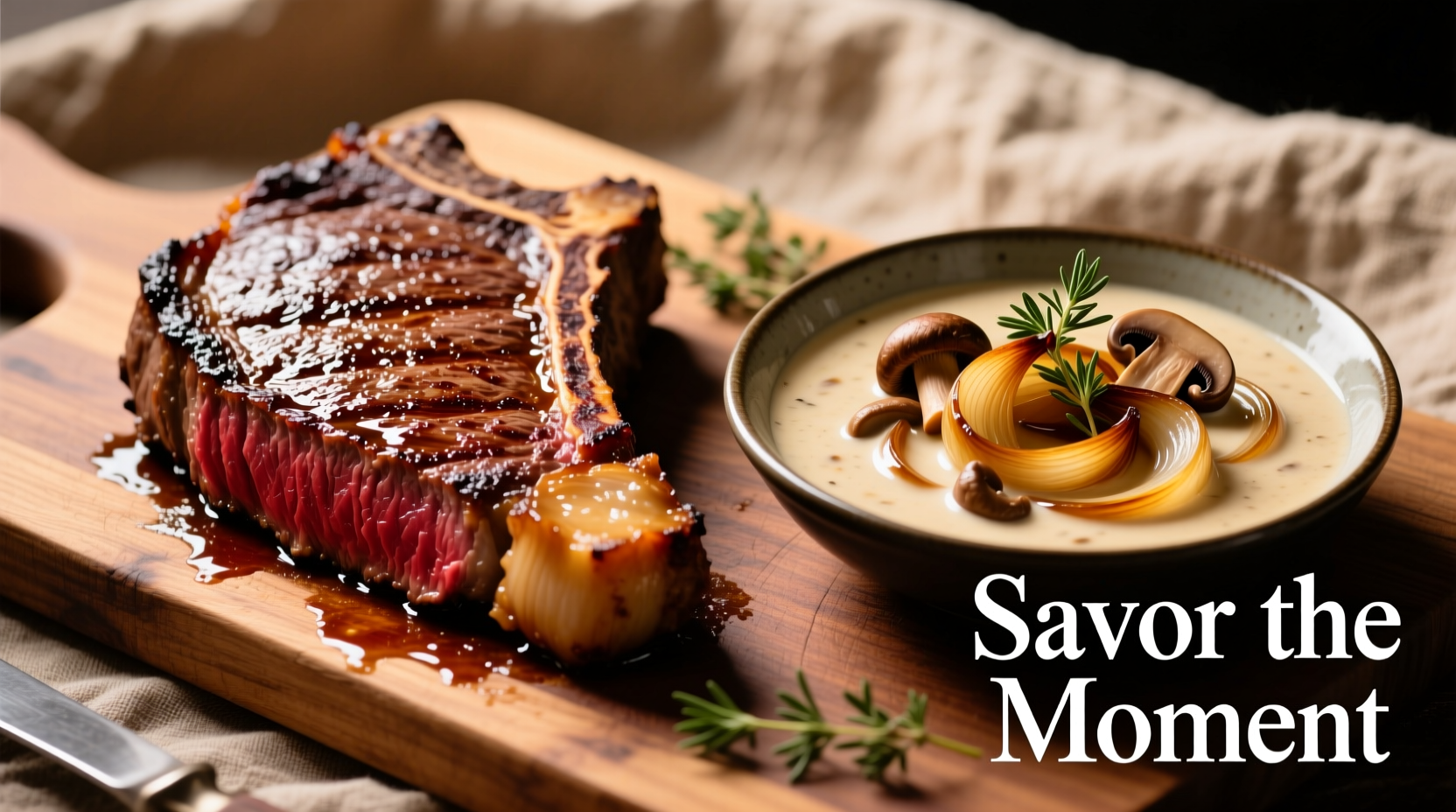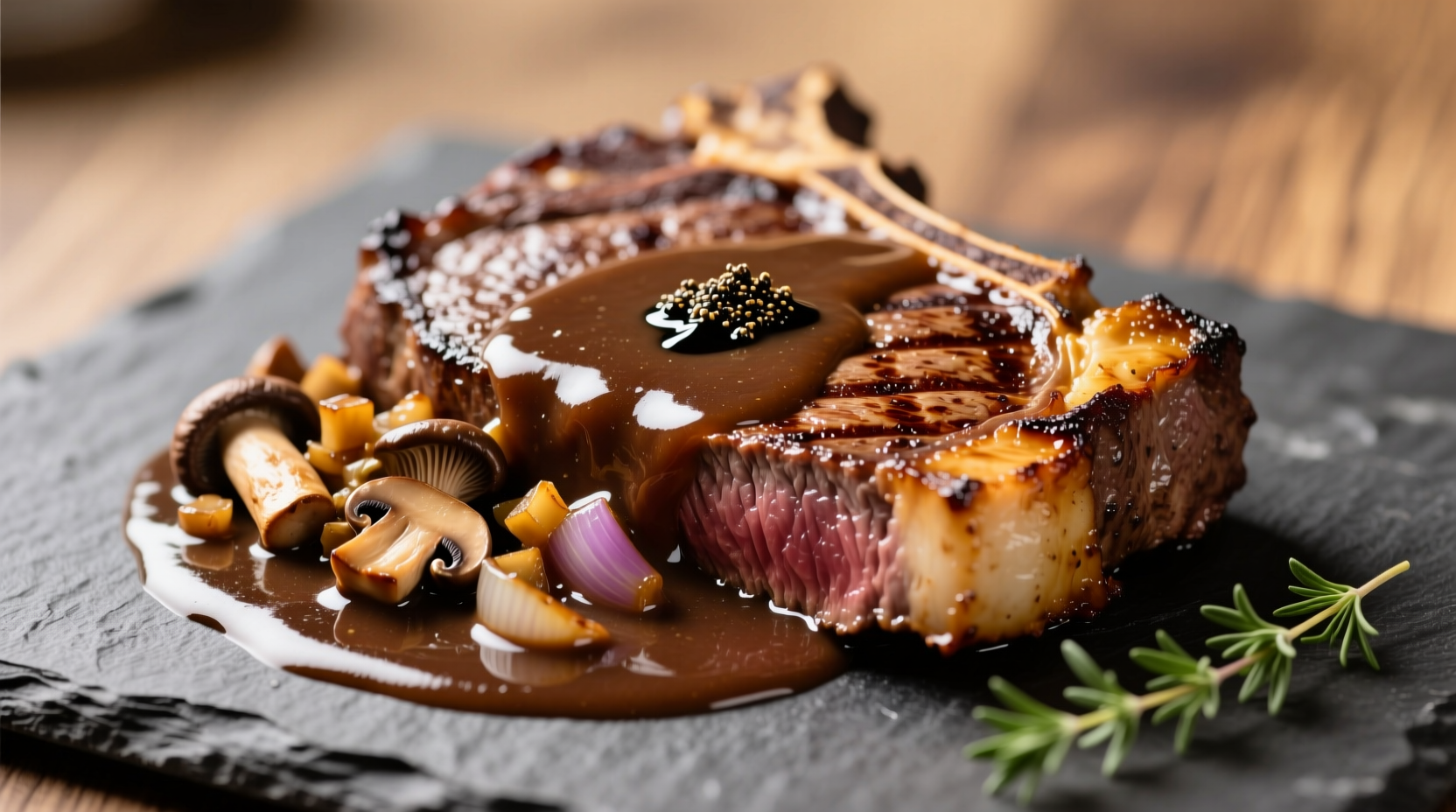This mushroom and onion sauce for steak delivers rich umami depth with perfectly balanced savory notes. Our tested recipe creates a velvety, restaurant-quality pan sauce in just 20 minutes using simple ingredients you likely have on hand. The key is proper deglazing technique and controlled reduction to achieve the ideal consistency that complements rather than overwhelms your steak.
Why This Sauce Belongs on Your Steak Plate
When executed properly, mushroom and onion sauce transforms a good steak into an exceptional meal through strategic flavor layering. The natural glutamates in mushrooms combine with the caramelized sugars from onions to create a synergistic umami boost that enhances the meat's inherent richness without masking it. According to culinary research from the Culinary Institute of America, this pairing works because both ingredients share key flavor compounds with seared beef, creating a harmonious taste profile rather than competing elements.
Essential Ingredients and Their Roles
Understanding each component's purpose ensures your sauce achieves professional results:
| Ingredient | Function | Professional Tip |
|---|---|---|
| Cremini mushrooms | Deeper earthy flavor than button mushrooms | Slice uniformly ¼-inch thick for even cooking |
| Yellow onions | Sweetness balances mushroom earthiness | Cook low and slow for proper caramelization |
| Dry red wine | Acidity cuts richness, enhances complexity | Use Cabernet Sauvignon for best results |
| Beef stock | Intensifies meaty flavor foundation | Homemade reduces gelatin for better texture |
Step-by-Step Sauce Preparation
Follow this precise sequence for optimal flavor development:
1. Perfect Mushroom Sear
Heat 1 tbsp oil in cast iron skillet over medium-high heat until shimmering. Add mushrooms in single layer without crowding (work in batches if needed). Resist stirring for 3 minutes to develop proper fond, then cook until golden brown. Remove mushrooms and set aside.
2. Onion Caramelization Process
Reduce heat to medium. Add 1 tbsp butter and onions with pinch of salt. Cook 12-15 minutes, stirring occasionally, until deeply golden but not burnt. Proper caramelization develops 30+ flavor compounds that form the sauce's aromatic foundation.
3. Deglazing Technique
Return mushrooms to pan. Pour in ½ cup red wine, scraping bottom thoroughly to incorporate all fond. Simmer until wine reduces by half, approximately 4 minutes. This critical step captures the flavorful browned bits created during searing.
4. Final Reduction
Add 1 cup beef stock and bring to gentle simmer. Cook 8-10 minutes until sauce coats the back of spoon. Finish with 1 tbsp cold butter off-heat for proper emulsification and glossy texture.

Avoid These Common Sauce Mistakes
Professional kitchens consistently avoid these pitfalls that ruin otherwise good sauces:
- Overcrowding mushrooms - causes steaming instead of searing (maintain single layer)
- Rushing onion cooking - under-caramelized onions create harsh, sharp flavors
- Using low-quality stock - impurities create cloudy, bitter sauce (clarify homemade stock)
- Adding butter at wrong temperature - causes separation (always incorporate off-heat)
When This Sauce Works Best (and When to Skip It)
Understanding context boundaries ensures optimal pairing:
- Ideal for: Ribeye, strip steak, and filet mignon (richer cuts handle bold sauce)
- Less suitable for: Delicate cuts like flank or hanger steak (overpowers subtle flavors)
- Temperature requirement: Sauce should be warm but not boiling when served (140°F optimal)
- Timing consideration: Prepare during steak's resting period for perfect synchronization
Variations for Different Palates
Customize this classic foundation to match your preferences:
- French style: Add 1 tbsp cognac with wine and finish with fresh thyme
- Creamy version: Stir in ¼ cup heavy cream during final reduction
- Garlic enhancement: Add 2 minced cloves with onions for aromatic depth
- Worcestershire boost: 1 tsp added with stock for umami complexity
Serving and Storage Guidelines
For optimal results, spoon sauce over steak immediately after plating. Leftover sauce maintains quality for 3 days in airtight container in refrigerator. When reheating, warm gently over low heat while whisking to prevent separation. Freezing is not recommended as dairy components may break during thawing.
Can I make this sauce without alcohol?
Yes, substitute the red wine with equal parts beef stock plus 1 tbsp balsamic vinegar. The vinegar provides necessary acidity while maintaining depth. Avoid using plain stock as the sauce will lack complexity and proper balance.
Why does my sauce turn out watery?
Watery sauce typically results from insufficient reduction or adding too much liquid. Ensure wine reduces by half before adding stock, and simmer until sauce coats the back of spoon (approximately 8-10 minutes). Using homemade stock with higher gelatin content also improves texture.
Which mushrooms work best for steak sauce?
Cremini mushrooms provide ideal flavor balance with deeper earthiness than button mushrooms but less intensity than porcini. For special occasions, combine creminis with 25% shiitake for enhanced umami. Avoid white button mushrooms as they lack sufficient flavor depth for steak pairing.
How do I prevent my sauce from becoming bitter?
Bitterness usually comes from burnt fond or overcooked onions. Maintain medium heat during caramelization, stir frequently, and deglaze promptly after searing mushrooms. If bitterness occurs, add ¼ tsp sugar and 1 tsp butter to counteract while maintaining balance.











 浙公网安备
33010002000092号
浙公网安备
33010002000092号 浙B2-20120091-4
浙B2-20120091-4